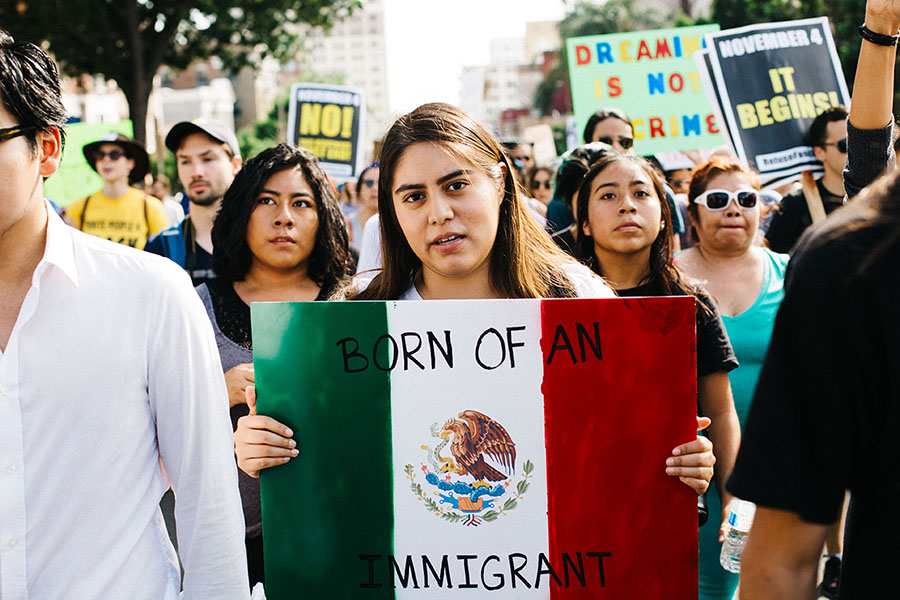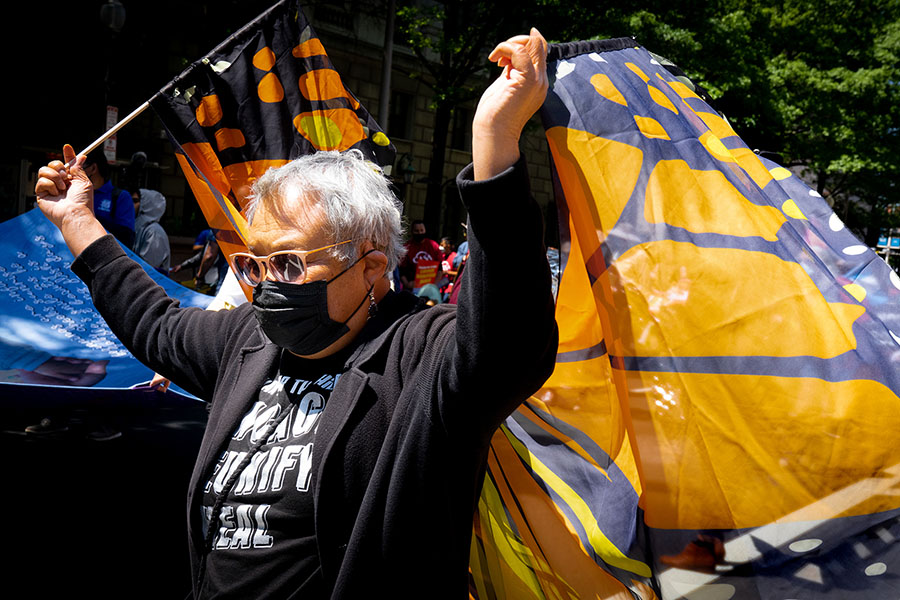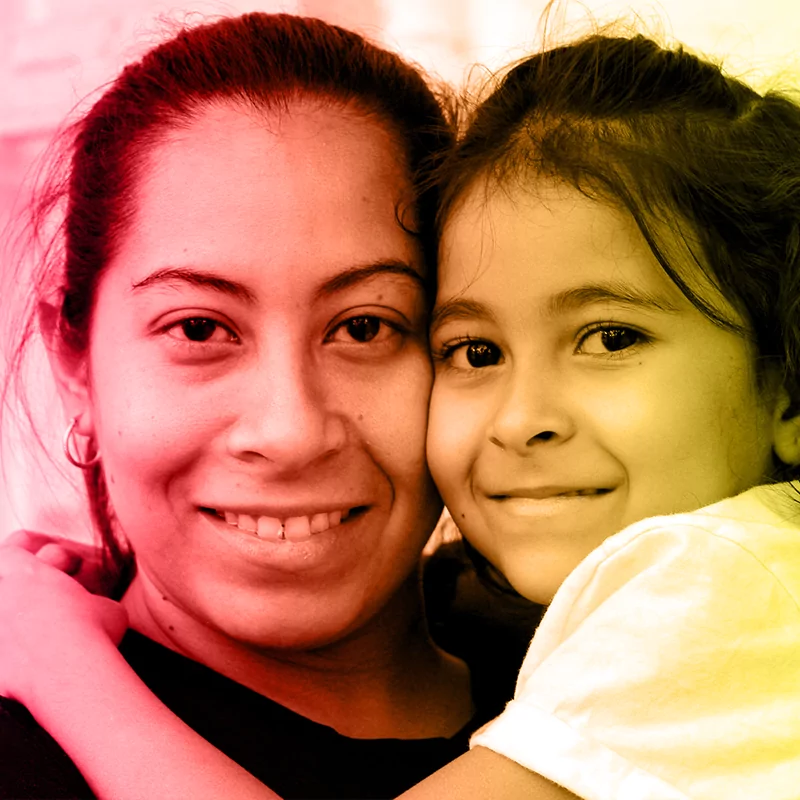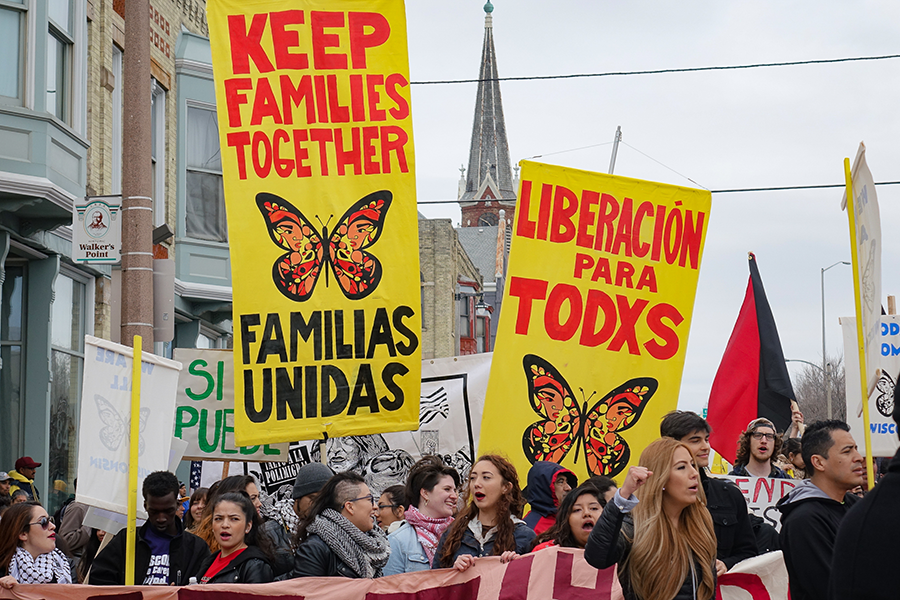Five Tips: How to Avoid Common Myths About Immigration

By Brian Erickson, Digital Communications and Multimedia Manager, The Opportunity Agenda
Right now, we’re witnessing the cruelty of unleashing the full force of federal immigration agents on our communities. Many of our communities are responding powerfully, organizing and sharing know your rights information to protect one another.
It’s important to recognize, however, that the false and harmful stories told about immigrants time and time again in the news and online serve a purpose. By design, they’re used to dehumanize our families, friends, and neighbors and bolster support for mass deportation.
For many of us, our first instinct is to respond by saying “immigrants aren’t criminals” or “no human being is illegal.” However, not only do these reactions miss an opportunity to unapologetically say what we know to be true about immigration, but they also tiptoe into the dangerous practice of myth-busting.
Together, we can interrupt the narrative cycle of dehumanization and deportation, and this guide provides a starting point for how.
Why Myth-busting Hurts Immigrant Justice
The impulse to “myth-bust”— to explain why misleading information or outright lies are not true — is natural, especially when lies are being told about us or our communities. You often see myth-busting take the form of a list, with the myth in bold and the explanation debunking it in fine print below.
However, when we myth-bust, we inadvertently cause more harm: by repeating harmful messages, we spread these messages further and risk exposing them to new audiences. Ultimately, we end up using the precious energy and time we have correcting misinformation only to have these lies reinforced in people’s minds.
The anti-immigrant playbook relies primarily on repeating two harmful narratives: that there are scarce resources to go around, and that law and order must be maintained at any cost, human or economic. These narratives appear in the stories politicians use to manipulate people’s fears about making ends meet or public safety.
Their aim? Pointing the finger at immigrants seeks to divide us and deflect attention from their role in furthering inequality. Meanwhile, parents continue to kiss their children goodbye at school, workers clock in for their shifts, and families gather for dinner while bearing the weight of not knowing what tomorrow will bring.
So resist the trap of myth-busting!
Drawing from our longstanding research in effective messaging, this guide provides a better way with practical approaches that highlight the countless ways immigrants contribute to and strengthen our economic, social, and cultural life in the United States.
Quick Tips
Below are five quick tips with examples of how to use them. They include:
- Use “people first” language: avoid labels to help remind audiences of the real impacts of detention and deportation on real people.
- Celebrate the many contributions of immigrants to our communities: emphasize human dignity when talking about the positive economic and cultural value of immigration.
- Remind people movement is natural, and asylum is a right: it takes courage to move, and many people can relate to doing anything for your children.
- Focus on what true community “safety” looks like for all of us: tell a bigger story about what safe communities look like to avoid the crime myth trap.
- Focus on solutions that reflect our values, not problems: painting a clear picture of what’s possible—our futures over fear—helps energize and mobilize.
Five Tips for Telling a Positive Story about Immigration
Research shows that people are more receptive to a new way of thinking when we start every conversation with what matters most: our shared values. That’s why we created The Opportunity Agenda’s signature VPSA (Values, Problem, Solution, Action) framework. This proven approach cuts through divisive rhetoric. And the best part? Anyone can use it effectively.
Whether you’re posting on social media, talking with neighbors, or speaking at a town hall with elected representatives, begin by connecting immigration to the fundamental beliefs that unite us—our commitment to family, our desire for thriving communities, our belief in safety for all, and our dedication to creating opportunity.
Tip #1 – Use “people first” language.

The end game of the political spectacle of mass deportation is to strip immigrants of their humanity. This is typically done by rendering them merely as numbers or labeling them with xenophobic terms such as “illegal” or “alien.” We can inject humanity back into the conversation by starting our stories with people.
The easiest way to think about it is to talk about people, not labels.
Rather than saying “undocumented,” use “people without documentation.” And when describing people on the move or detained by Immigration and Customs Enforcement (ICE) and Customs and Border Protection (CBP), use “people who arrive at our borders” or “people detained by immigration agents.” We’re already seeing a rise in the use of xenophobic terms like the ones outlined above, which makes it even more urgent to carefully and thoughtfully select our words.
Most importantly, use your energy to tell stories about community to replace those seen frequently in news headlines whose primary aim is to cast immigrants as threats.
Tip #2 – Celebrate the many contributions of immigrants to our communities.
Immigrants enrich our communities, strengthening our nation by sharing their unique skills, experiences, and cultural practices. We must advance an alternate vision for a pro-immigrant future rooted in connection that contrasts with the current one, propped up by executive orders that ostracize and expel valued members of our families and communities. By fully embracing and celebrating people who immigrate, we can create a vibrant and resilient nation for everyone.
For example, protecting immigrant children in the classroom recognizes the value of diversity and prepares the next generation for success in a globalized world. And celebrating immigrant artists underscores both their importance in defining pop culture, and how art introduces us to new ideas or the hopes and dreams we share.
Immigrants also contribute significantly to our economy both as buyers of consumer goods and owners of small businesses. And yes, they pay taxes. In fact, in 2022, immigrant households paid local, state, and federal taxes to the tune of one of every six tax dollars, funding critical social programs that many of us depend on.
However, when you celebrate the economic contributions of immigrants, remember to emphasize that they are people first. Pro-immigrant policies can turbocharge our economic engine, but we support them because we believe in treating everyone with dignity.
Tip #3 – Remind people movement is natural, and asylum is a right.

Moving takes courage. Many people in the United States move to create greater opportunities for them or their families. People who move to this country for a better life or to seek safety are no different, and immigrant families, like all families, deserve the opportunity to thrive together.
The real problem is our nation’s lack of a fair immigration process.
Contrary to what some politicians would have you believe, there exist very few avenues to legally immigrate to the United States. Every day, valued members of our communities—our neighbors, fellow churchgoers, and parents at our children’s schools—face a maze of intentionally complex immigration laws that keep them in legal limbo.
Many have built their lives here over decades, contributing to our shared prosperity and cultural fabric. They are New Americans in every meaningful way but on paper. These mothers, fathers, entrepreneurs, and dreamers deserve a clear, fair path to fully participate in the nation they help build.
How we treat people seeking asylum is also a powerful reflection of who we are becoming as a nation. In recent years, the U.S. government has slowly turned its back on people seeking safety. This contrasts powerfully with the response of communities, including those of faith, who eagerly rally to extend care and open arms to people who courageously move here. We must stand steadfast in demanding our government do the same by protecting access to asylum and refugee programs.
Tip #4 – Focus on what true community “safety” looks like for all of us.
Every family deserves to feel safe and welcome, regardless of where they come from or where they live. Harmful narratives that scapegoat immigrants are designed to sow division, preserve political power, and line the pockets of private prison and border security and surveillance corporations along the way.
Many of our most diverse cities, including along the U.S.-Mexico border, consistently rank among the safest in the nation. That said, avoid the narrative trap of factual debates over crime rates and migration by focusing on bigger picture solutions that help everyone.
Real safety comes from building strong communities together. This means investing in policies that help all families thrive: quality public education, livable wages, and affordable housing. People who immigrated to our communities are active partners in realizing solutions that strengthen community trust and safety. When we support these fundamental needs, we create communities where everyone can feel secure and valued.
Tip #5 – Focus on solutions that reflect our values, not problems.

We’re living with tremendous uncertainty and very real threats, but we must do our best to resist the urge to dwell on problems. Instead, focus on solutions that bring our values to life. Stories of positive change and collective action inspire people more than critiques of the current system. That’s why our vision of a future over fear is so threatening to this current administration.
Therefore, paint a clear picture of what’s possible: communities where everyone has the freedom to move and live with dignity. A justice system that ensures due process, providing legal representation and family support during immigration proceedings. Local policies that build trust between law enforcement and residents, creating safer neighborhoods for all.
Remember: People are more likely to engage when they see a path forward. By highlighting solutions that reflect our shared values of fairness, dignity, and community, we inspire others to join us in creating change. Frame your message around specific, achievable reforms that transform our immigration system into one that honors our highest ideals—where everyone is treated with respect and shares an opportunity to thrive.
We Choose the Future Over Fear
False stories and myths only become stronger when we give them more air by spreading them. The time is now to replace harmful narratives with a vision of a future we know is possible.
While we must remain vigilant against disinformation and protect hard-won progress, our greatest power lies in sharing stories of hope, resilience, and community. Instead of amplifying harmful narratives, let’s fill our spaces—both digital and physical—with trusted sources, authentic voices, and inspiring stories that reflect the truth about immigrants and immigration.
Real narrative change begins with each of us. We hope these tips help you continue to show up for one another in person and in the way you talk to family and friends online or at the dinner table.







